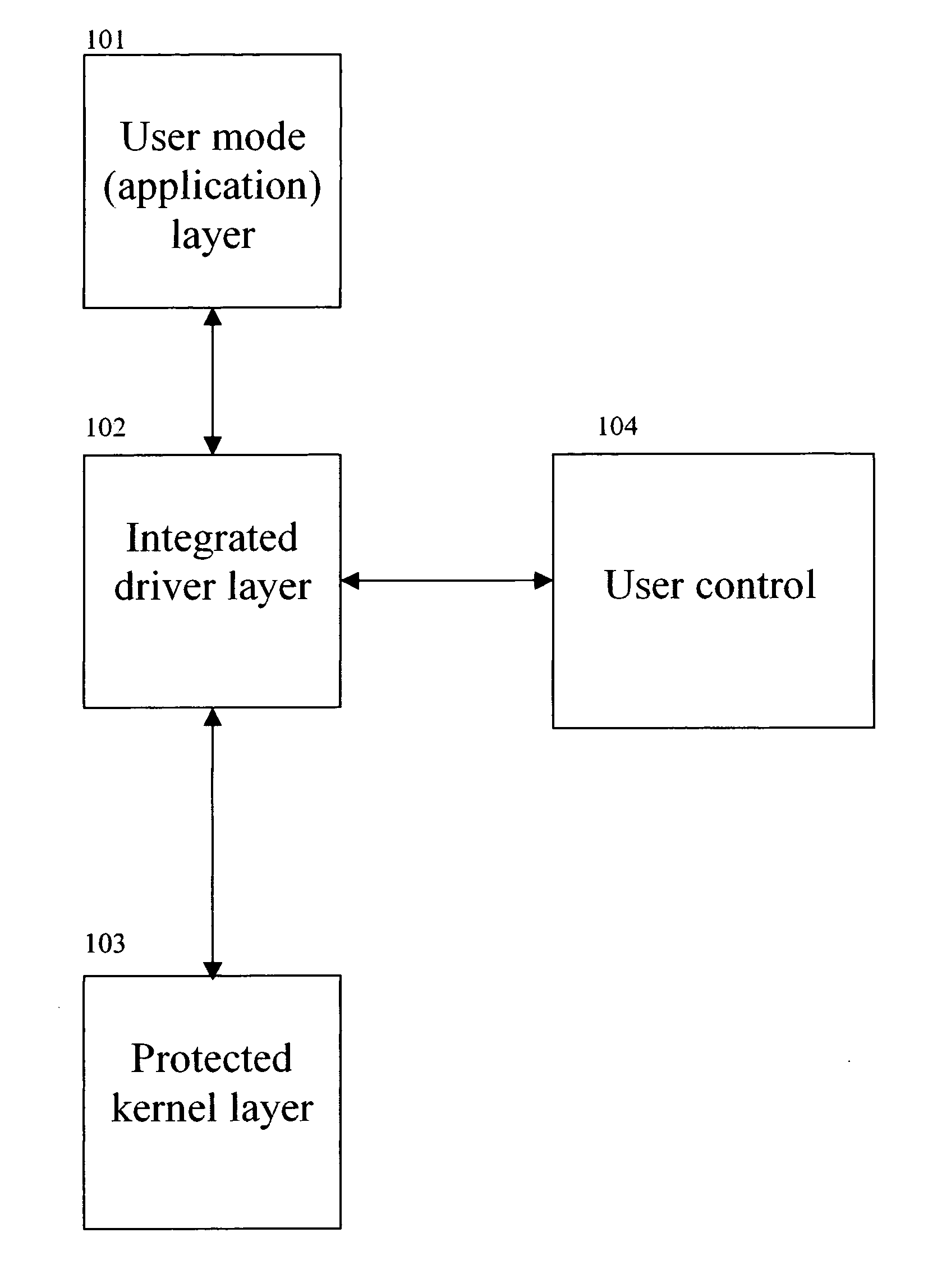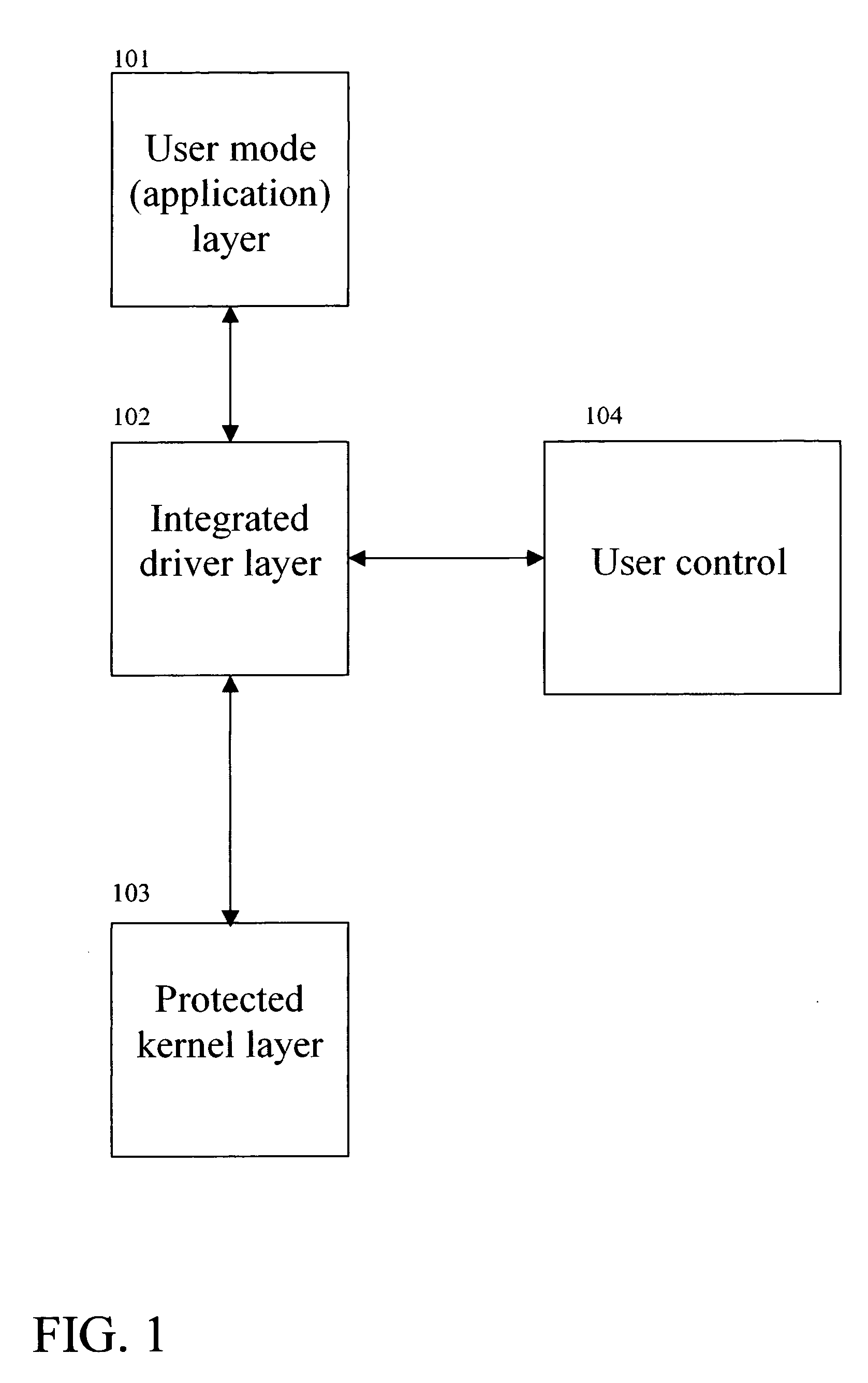Protecting embedded devices with integrated permission control
a technology of permission control and embedded devices, applied in the field of data processing systems, can solve the problems of tiny devices being vulnerable to malicious programming code, computer processing systems such as desktop computers and computer networks, and being particularly vulnerable to new types of attacks
- Summary
- Abstract
- Description
- Claims
- Application Information
AI Technical Summary
Benefits of technology
Problems solved by technology
Method used
Image
Examples
Embodiment Construction
[0018] The operation of the present invention will now be described in conjunction with the Drawing Figure. FIG. 1 illustrates the preferred embodiment of the present invention. At step 102, the present invention interposes an “integrated driver” between the upper between the upper “user mode layer” at step 101 and the lower, protected system kernel at step 103. The integrated driver at step 102 controls permissions and the flow of information between upper layers (101) and lower layers (103).
[0019] The integrated driver at step 102 also intercepts all system calls between upper layers (101) and lower layers (103), thus preventing vulnerabilities from passing to the protected kernel at 103, thus preventing vulnerabilities from passing to the protected kernel at 103. The integrated driver at step 102 can optionally scan for viruses passing between step 101 and step 102, in real time, using either signature based scanning or heuristic scanning.
[0020] A user control at step 104 also ...
PUM
 Login to View More
Login to View More Abstract
Description
Claims
Application Information
 Login to View More
Login to View More - R&D
- Intellectual Property
- Life Sciences
- Materials
- Tech Scout
- Unparalleled Data Quality
- Higher Quality Content
- 60% Fewer Hallucinations
Browse by: Latest US Patents, China's latest patents, Technical Efficacy Thesaurus, Application Domain, Technology Topic, Popular Technical Reports.
© 2025 PatSnap. All rights reserved.Legal|Privacy policy|Modern Slavery Act Transparency Statement|Sitemap|About US| Contact US: help@patsnap.com


